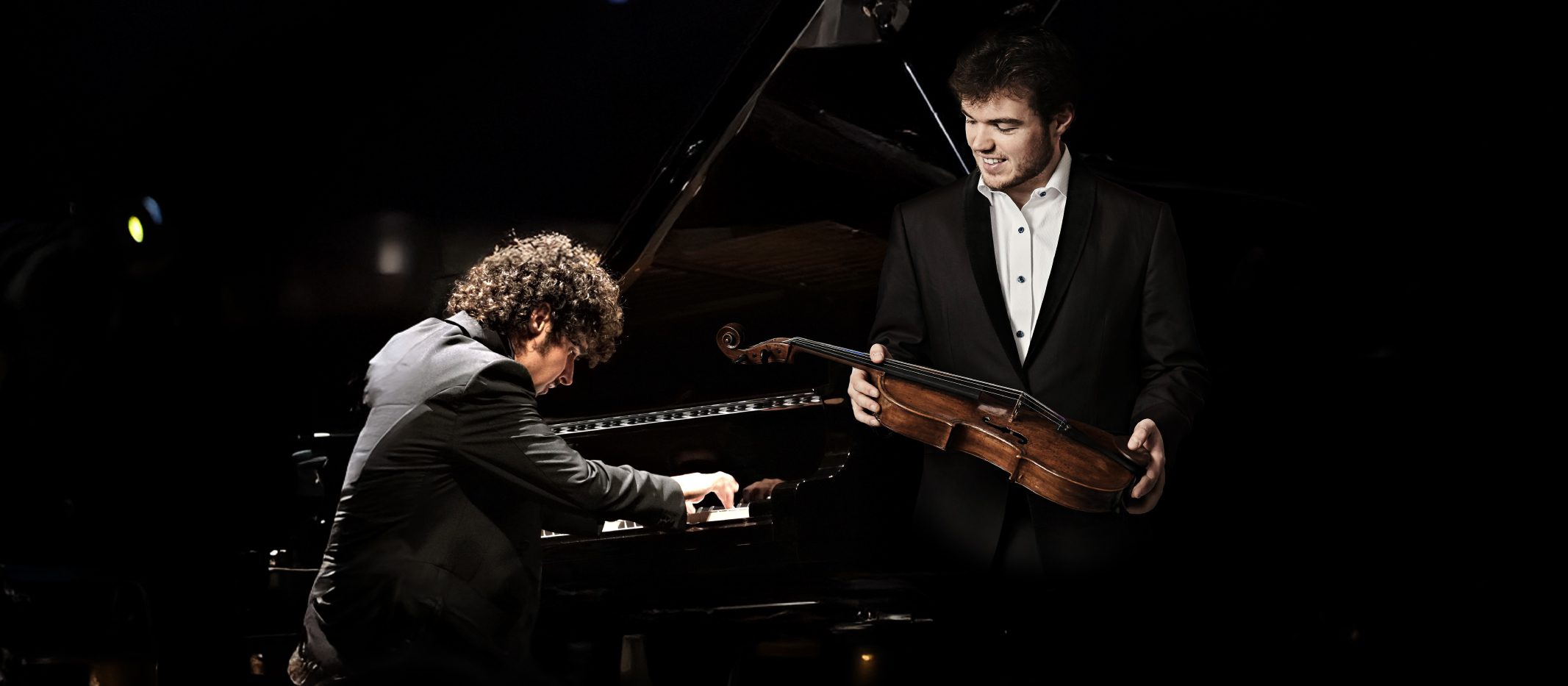The Auditorio de Tenerife and Tenerife Viola Fest have organised a concert of violist Timothy Ridout accompanied by pianist Federico Colli.
Renowned artists Timothy Ridout (viola) and Federico Colli (piano) are to give a recital of works from three eras of great expressive depth in which the viola makes full use of its lyrical and dramatic potential.
The programme begins with Three Romances, Op. 94 (1849) by Robert Schumann, arranged in a transcription that enhances the intimacy and poetic nature of the composition. Next, Cello Sonata No. 1 in E minor, Op. 38 by Johannes Brahms. In this version for viola, the intensity of Romanticism and the richness of chamber music come together in one of Brahms’ most moving works. Concluding the recital is Dmitri Shostakovich‘s Sonata for Viola and Piano, Op. 147 (1975). Shostakovich’s swansong reflects his maturity and is imbued with introspection, irony and singular expressive power.
Schumann
Romances Op. 94
Brahms
Cello Sonata Nº 1 (viola transcription)
-Intermission-
Shostakovich
Sonata
Romantic music is not only known for its introspective and sentimental nature but also for its timbre and potential for transmitting deeply felt emotions. The viola, with its warmth and dark resonance, is a common thread in this recital, connecting such versatile and expressively colourful works.
The programme constitutes a journey through history and eras, from German Romanticism to the late 20th century, and brings together transcribed and original works for a single purpose: to portray music as an inner voice. Whereas the adaptations of Schumann and Brahms broaden the repertoire of the viola and reveal new sounds without detriment to the essence of Romanticism, the original work of Shostakovich for viola is the high point of the recital and offers spectators a musical testament of great intensity and lyricism.
Robert Schumann — Three Romances, Op. 94 (transcription for viola and piano)
As its title indicates, this work consisting of three short pieces was originally composed in 1849 for oboe and piano and reflects Schumann’s Romantic sensibility. Rather than encumbering the spirit of the music, the transcription for viola enhances the melodic lyricism and nostalgia that embody Schumann’s compositions. Each piece conveys a mood closely associated with intimacy: tenderness, melancholy and reflection.
Musically, these pieces are characterised by expressive melodic lines played cantabile on the viola and the style’s typically rich, modulating harmony. The rhythm moves freely, using rubato and small embellishments to heighten the expression. In particular, the transcription highlights the middle and lower register of the instrument, adding warmth and depth to the interpretation of the melody.
Johannes Brahms — Cello Sonata No. 1 in E minor, Op. 38 (transcription for viola and piano)
The Cello Sonata No. 1 in E minor, Op. 38 was composed between 1862 1865. It is the first great work of chamber music of Brahms to position the composer as the inheritor of the German tradition that Beethoven and Schubert-in addition to the polyphonic richness of Bach-had contributed to the expressive spirit of Romanticism.
Characteristic of this work is the thematic development reminiscent of the polyphony of Bach, to whom the composer pays tribute to some extent, especially in the last movement, which culminates in a fugue inspired by The Art of Fugue. The first movement, marked Allegro non troppo, is an example of Brahms’ sombre but precise and impassioned compositional style. The Allegretto quasi Menuetto offers contrasting serenity and much lighter elegance. The transcription for viola provides a new and highly suitable sonority that accentuates the deep, melancholic voice that permeates the work.
Dmitri Shostakovich — Sonata for Viola and Piano, Op. 147
This is Shostakovich’s last work, completed in July 1975, just a few weeks before his passing. Sonata for Viola and Piano, Op. 147 is considered his musical testament. The sonata is dedicated to the composer’s friend, Fyodor Druzhinin, violist of the Beethoven Quartet, who premiered it after Shostakovich’s death.
In an austere and concentrated language that is typical of the composer’s final years, the sonata alternates irony and moments of great lyricism, with nods to Beethoven (Moonlight Sonata) and evocations of Shostakovich’s own music. Although this contrasts with the grandiosity of other works in his catalogue, it gains in confessional intensity. The last movement, an adagio that slowly fades into silence, sounds like a farewell. With this work, Shostakovich created an intimate and definitive confession of his artistic life.
Victoria Hernández Rodríguez, Student of Musicology at the CSMC
Access is only allowed to those over five years of age.
For further information, please check the general purchase terms and hall conditions.
If you have any questions while purchasing your tickets, please contact taquilla@auditoriodetenerife.com or call 922 568 625 from Monday to Friday, 10 a.m. to 2 p.m., except on public holidays.
